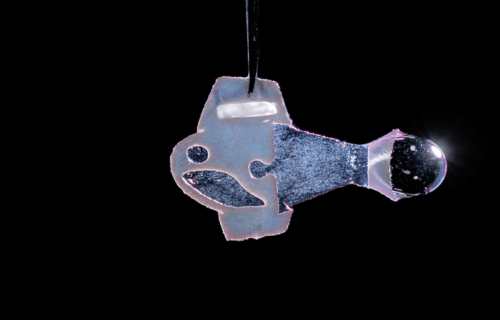LIKE ITS ENTHUSIAST'S ITS A TEENAGER
Bitcoin Is 13 Years Old, and Still Looking for Its Creator
By Rob Lenihan
2022/2/11
© The Street
It's been 13 years since Satoshi Nakamoto asked the world to give his e-cash system bitcoin a try.
On February 11, 2009, someone going by the name of Satoshi Nakamoto announced that he had developed an e-cash system called bitcoin and asked the world to "give it a try."
And the world did.
Crypto Proof Instead of Trust
Barack Obama was president back then. Friday the 13th was the number one movie at the box office and Kelly Clarkson's "My Life Would Suck Without You" was at the top of the Billboard Hot 100.
And a social media site called Facebook was rapidly gaining in popularity, while pushing out the likes of MySpace.
Nakamoto said in his announcement that bitcoin was "completely decentralized, with no central server or trusted parties because everything is based on crypto proof instead of trust."
"With e-currency based on cryptographic proof, without the need to trust a third party middleman, money can be secure and transactions effortless," Nakamoto said.
Bitcoin took a little while to catch on, but, on May 17, 2010 a programmer named Laszlo Hanyecz made the first documented purchase of a good with bitcoin when he bought two Domino's pizzas for 10,000 BTC.
Things have changed a great deal since that time. Bitcoin has worked its way into society's consciousness as prices have soared, plummeted and climbed back up again, with January being a particularly rocky month.
More than 15,000 business worldwide accept bitcoin as payment and several U.S. mayors, including New York's Eric Adams, have gotten their paychecks in bitcoin.
El Salvador became the first country in the world to make bitcoin legal tender. However, at least 9 countries have banned cryptocurrencies.
And now 10,000 BTC is worth about $442 million.
But through it all, the identity of Satoshi Nakamoto remains a mystery.
Boom-and-Bust Cycles
There has been no shortage of suspects, with some even suggesting that Tesla (TSLA) - Get Tesla Inc Report CEO Elon Musk is crypto mystery man. Sahil Gupta, a former intern at Musk's SpaceX, named him in a blog post.
The electric vehicle maker has a significant investment in bitcoin, but Musk denied the allegation.
Musk has agreed with the common theory that cryptocurrency expert Nick Szabo, saying in an interview that Szabo "is probably, more than anyone else, responsible for the evolution of those ideas." Szabo has denied being Nakamoto.
What does the future hold for bitcoin?
It's certainly not the only cryptocurrency around. Last year, Bitcoin’s use at merchants that use BitPay dropped to about 65% of processed payments, down from 92% in 2020, Bloomberg reported.
This week JPMorgan analysts put fair value for the world’s biggest digital currency at $38,000, below the recent level of $43,628.
The year 2022 "is likely to be a more challenging and more mean-reverting year for digital assets,” the analysts wrote in a commentary.
“The biggest challenge for bitcoin going forward is its volatility and the boom-and-bust cycles that hinder further institutional adoption.”
But stock research and market forecasts company FSInsight, operated by Fundstrat Global Advisors, predicted bitcoin would touch $200,000 in the second half, despite its turbulent start to 2022
"Bitcoin became increasingly correlated with equities toward the end of the fourth quarter of last year and fell when faced with the prospect of central bank tightening," FSInsight's Head of Digital Asset Strategy Sean Farrell wrote.





